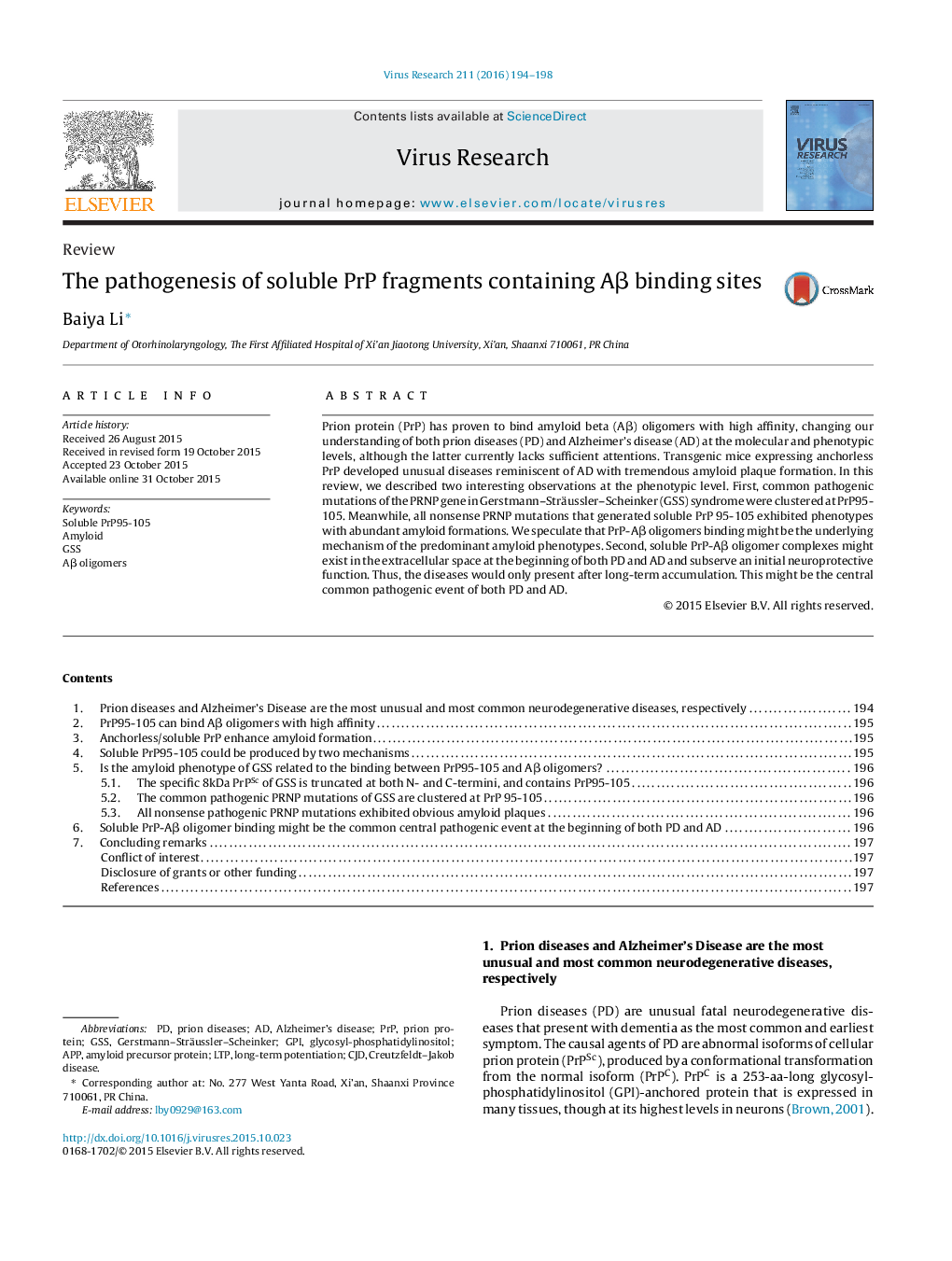| Article ID | Journal | Published Year | Pages | File Type |
|---|---|---|---|---|
| 3427990 | Virus Research | 2016 | 5 Pages |
•Common pathogenic mutations PRNP in Gerstmann–Sträussler–Scheinker syndrome (GSS) are clustered at PrP95-105.•All the nonsense PRNP mutations producing truncated PrP fragment with PrP 95-105 exhibited tremendous amyloid phenotypes.•The high affinity binding between PrP95-105 and Aβ oligomers might be the underlying mechanism of the predominant amyloid phenotype of GSS.•Soluble PrP-Aβ oligomer complexes might be the central common pathogenic event of both prion diseases and Alzheimer’s disease.
Prion protein (PrP) has proven to bind amyloid beta (Aβ) oligomers with high affinity, changing our understanding of both prion diseases (PD) and Alzheimer’s disease (AD) at the molecular and phenotypic levels, although the latter currently lacks sufficient attentions. Transgenic mice expressing anchorless PrP developed unusual diseases reminiscent of AD with tremendous amyloid plaque formation. In this review, we described two interesting observations at the phenotypic level. First, common pathogenic mutations of the PRNP gene in Gerstmann–Sträussler–Scheinker (GSS) syndrome were clustered at PrP95-105. Meanwhile, all nonsense PRNP mutations that generated soluble PrP 95-105 exhibited phenotypes with abundant amyloid formations. We speculate that PrP-Aβ oligomers binding might be the underlying mechanism of the predominant amyloid phenotypes. Second, soluble PrP-Aβ oligomer complexes might exist in the extracellular space at the beginning of both PD and AD and subserve an initial neuroprotective function. Thus, the diseases would only present after long-term accumulation. This might be the central common pathogenic event of both PD and AD.
